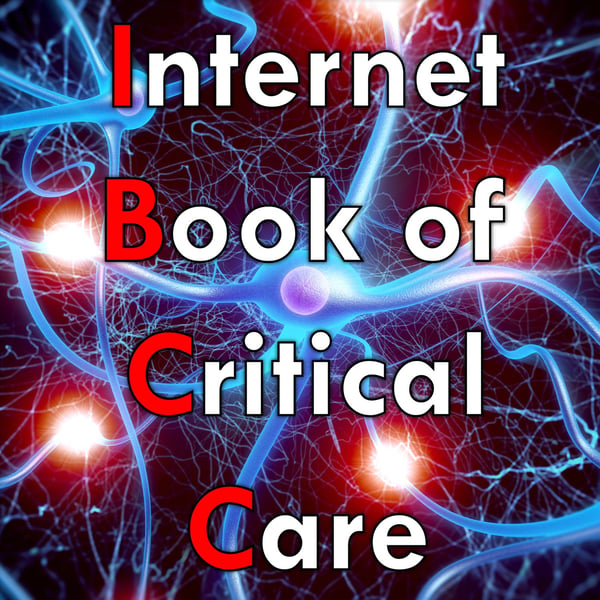IBCC Episode 51 - Tumor Lysis Syndrome
The Internet Book of Critical Care Podcast
Adam Thomas
5 • 714 Ratings
🗓️ 22 August 2019
⏱️ 22 minutes
🧾️ Download transcript
Summary
In this episode, we cover all things you need to know cold when your patient's cells are bursting all over the place.
-Life threatening Hyperkalemia
- Purine Nucleotide Management
-Rasburicase
-Dialysis
Transcript
Click on a timestamp to play from that location
| 0:00.0 | So welcome back to the Internet Book of Critical Care podcast. I'm here with Adam Thomas, and we're going to talk about tumor lysis syndrome. |
| 0:11.5 | Tumorlysis syndrome. You go zero to 100 right away. It's a lot of fun to treat because the patients can be super, super sick. And then if you approach it in a correct manner, they can turn around |
| 0:21.0 | within your shift, shall we say, hey, Josh? |
| 0:23.5 | Today we're going to talk about the signs and symptoms. |
| 0:25.7 | We're going to get specific with relevant physiology of why these xanthine and uric acid cause |
| 0:31.5 | all the trouble. |
| 0:32.2 | And then Josh has wonderfully mapped out the approach to clinical signs, the diagnosis, and |
| 0:37.3 | the standard textbook |
| 0:39.1 | BS doesn't work. So he's using the chiro definition, which I totally agree with. It's a lot |
| 0:43.7 | easier to use. And then we'll cover prevention and then treatment of tumor lysis syndrome. |
| 0:48.3 | So that being said, Josh, let's get right into it because this one will be a quick to the point |
| 0:52.5 | podcast. All right. So we're going to start with some physiology, and it's not super exciting, |
| 0:56.7 | but it's incredibly important to understand how these drugs are working and when we're |
| 1:00.1 | going to choose with different drugs. |
| 1:01.4 | So essentially, tumor Lysis syndrome results from lysis of a lot of tumor cells, which |
| 1:05.9 | releases calcium, phosphate, potassium, and predominantly purine nucleotides. |
| 1:10.5 | So what I want to talk about right now is how these purine nucleotides. So what I want to talk about right |
| 1:11.4 | now is how these purine nucleotides are metabolized. So aden and guanine are essentially |
| 1:16.4 | shunted through to generate xanthene, and then finally yurk acid, and then in other mammals, |
| 1:22.6 | not in humans, yurk acid can be metabolized into Aalentohone, which is totally harmless. The problem arises |
| 1:28.7 | when yuracid and xanthine can precipitate the kidneys and cause problems. Now, traditionally, |
| 1:34.3 | alipurinol has been used to block off this channel, and alipurininin inhibits the conversion |
... |
Please login to see the full transcript.
Disclaimer: The podcast and artwork embedded on this page are from Adam Thomas, and are the property of its owner and not affiliated with or endorsed by Tapesearch.
Generated transcripts are the property of Adam Thomas and are distributed freely under the Fair Use doctrine. Transcripts generated by Tapesearch are not guaranteed to be accurate.
Copyright © Tapesearch 2025.

